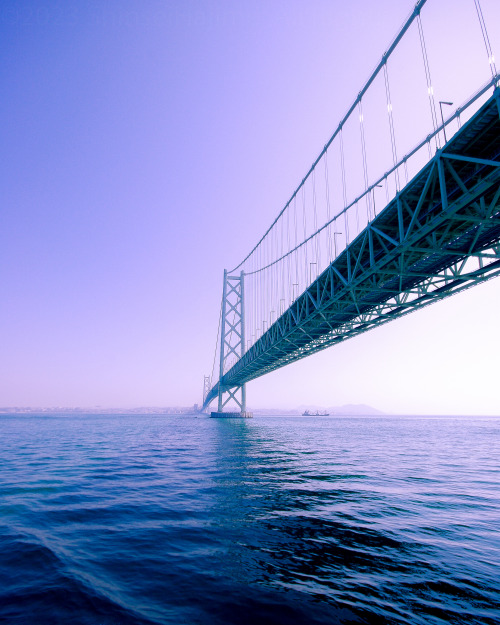Pentax - Blog Posts
Photochemical
Gonna start shooting film again...

Once upon a time in egypt
Shot on film📸

Photo at Mizumoto park,Tokyo metro,Japan
camera : PENTAX K-30
lens : smc PENTAX-DA 50-135mm F2.8 ED(IF)SDM
Aperture : F5.6
Focal length : 50mm
ISO : 400
Exposure : 1/60sec

Photo at Akashi Kaikyo Bridge,Hyogo pref,Japan
This bridge is still the largest in the world in terms of distance between stanchions.
camera : Pentax K-m
lens : Tamron 10-18mm F4-5.6
Aperture : F8
Focal length : 10mm
ISO : 100
Exposure : 1/350sec
明石市民及び淡路島島民にはお馴染みの「たこフェリー」から2009年に撮影したものです(^^)/

Photo at Misato Park,Saitama pref,Japan
camera : Pentax KP
lens : SIGMA 18-35mm F1.8
Aperture : F10
Focal length : 18mm
ISO : 400
Exposure : 1/125sec

Photo at Mizumoto Park,Tokyo,Japan
camera : PENTAX K-50
lens : PENTAX smc-PENTAX 18-135mm F3.5-5.6 ED AL WR
Aperture : F5.6
Focal length : 18mm
ISO : 200
Exposure : 1/50sec
Shinsei.Hajime (flowcode.com)

At a street corner in Shinjuku, Tokyo
Camera : PENTAX Q
Lens : PENTAX STANDARD Prime
Aperture : F4.0
Focal length : 8.5mm
ISO : 125
Exposure : 1/1000sec
Shinsei.Hajime (flowcode.com)

Windmill sunflower garden,Sakura city,Chiba Pref
Camera : Pentax Kx
Lens : SMC Pentax DA-L F3.5-5.6 18-55mm AL
Aperture : F4
Focal length : 18mm
ISO : 200
Exposure : 1/3200sec
Shinsei.Hajime (flowcode.com)

Misato Park, Saitama pref, Japan
Camera : Pentax KP
Lens : SIGMA 30mm F1.4 DC HSM
Aperture : F4.5
Focal length : 30mm
ISO : 100
Exposure : 1/200sec
Shinsei.Hajime (flowcode.com)
Understanding Camera ISO: What It Is and How to Use It
What is ISO in Photography?
ISO is one of the three fundamental pillars of photography, alongside aperture and shutter speed. It refers to the sensitivity of your camera's sensor to light. The term originates from the International Organization for Standardization, which set the standard for measuring film sensitivity in analog cameras, and the concept has carried over to digital photography.
Go visit to my website and take a look some awesome studio photos. Studiokuvaus Lappeenrannassa | Kuvaajankulma | Studiokuvat

A digital camera with its ISO settings visible on the LCD screen, illustrating the different ISO values and their impact on exposure.
Technical Explanation of ISO
ISO represents the gain or amplification applied to the camera sensor's signal. In a digital camera, the sensor captures light in the form of photons, which are then converted into an electrical signal. This signal is processed to create a digital image.
At lower ISO values (e.g., ISO 100), the signal undergoes minimal amplification, producing cleaner images with finer detail and less noise. At higher ISO values (e.g., ISO 3200), the signal is amplified significantly to brighten the image in low-light conditions, but this also increases electronic noise, leading to grainy images.
Unlike film cameras, where ISO is a physical property of the film, digital cameras use software and hardware processing to simulate ISO changes. The native ISO of a sensor is the baseline sensitivity at which it performs best with minimal noise. Some high-end cameras offer dual native ISO settings, optimizing performance for both bright and low-light conditions.
How ISO Works
The ISO setting controls how much light is needed to create a properly exposed image. A lower ISO value (e.g., ISO 100) means the sensor is less sensitive to light, requiring more light from the scene or longer exposure times. A higher ISO value (e.g., ISO 3200) makes the sensor more sensitive to light, allowing for shorter shutter speeds or smaller apertures in low-light conditions.
Choosing the Right ISO Setting
ISO 100-200 – Ideal for bright, sunny conditions where ample light is available.
ISO 400-800 – Useful for cloudy days or indoor shooting with natural light.
ISO 1600-3200 – Great for low-light environments, such as night photography or indoor events.
ISO 6400+ – High ISO settings help capture images in very dark conditions but may introduce digital noise.
The Relationship Between ISO, Shutter Speed, and Aperture
ISO, shutter speed, and aperture work together in what is known as the exposure triangle. Increasing ISO allows for faster shutter speeds, which is helpful in freezing motion, but at the cost of more digital noise. Reducing ISO results in cleaner images but requires more light, which might necessitate a wider aperture or a longer shutter speed.
Managing ISO Noise
While high ISO settings enable shooting in darker environments, they can introduce noise, which appears as graininess in the image. Modern cameras have improved noise reduction, but using the lowest possible ISO for a given scene will ensure cleaner images. Post-processing software like Adobe Lightroom or Photoshop can help reduce unwanted noise.
Practical ISO Tips for Different Photography Styles
Portrait Photography: Use ISO 100-400 for clean and sharp images.
Sports Photography: Use ISO 800-3200 to freeze fast movements in indoor or dimly lit settings.
Astrophotography: Use ISO 3200-6400 to capture stars and celestial objects.
Street Photography: Use auto ISO with a maximum cap to adapt to changing lighting conditions.
Conclusion
Understanding and mastering ISO is essential for creating well-exposed images in different lighting conditions. By balancing ISO with shutter speed and aperture, photographers can capture sharp, noise-free images. Experimenting with different ISO settings will help you learn how to adapt to various environments and lighting conditions effectively.





